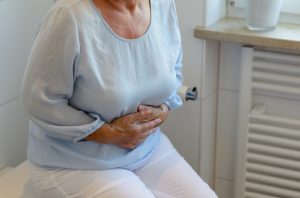Naloxone (Narcan)

What is Naloxone (Narcan)?
 Naloxone, known by common brand name Narcan, is a medication designed to reverse the harmful effects of opioid overdose. Opioids include heroin, hydrocodone, morphine, oxycodone and others. If not treated immediately, an opioid overdose can be extremely dangerous to a person’s health.
Naloxone, known by common brand name Narcan, is a medication designed to reverse the harmful effects of opioid overdose. Opioids include heroin, hydrocodone, morphine, oxycodone and others. If not treated immediately, an opioid overdose can be extremely dangerous to a person’s health.
"81.6 percent of reported naloxone reversals involved heroin. Prescription opioids were involved in 14.1 percent of cases."
The three most common signs of an opioid overdose – known as the opioid overdose triad – include:
- Pinpoint pupils
- Unconsciousness
- Respiratory depression
According to the Mayo Clinic, other symptoms may consist of:
- Slow heartbeat
- Extreme sleepiness
- Inability to respond to those around them
With a growing number of opioid-related deaths in the U.S., naloxone offers a life-saving treatment until emergency medical technicians can arrive on scene. The medication should only be used if there are opioids in a person’s system. Narcan does not counter other drugs and should not be used in individuals who do not have opioids in their system.
Although Narcan is effective in countering the negative impact of an opioid overdose, it should not be used by those in active addiction who are abusing opioids. If you are struggling with an addiction to opioids, get in touch with us now to connect with a treatment center near you.
Uses of Naloxone (Narcan)
After an opioid overdose, Narcan helps prevent respiratory and central nervous system depression. This occurs when breathing has slowed down or is at risk of stopping. The medication is injected into a vein or muscle and starts to take effect within minutes. If someone you know experiences an overdose, contact an emergency medical team quickly after administering the medicine.
In addition to reversing the negative impact of an opioid overdose, naloxone is also used after surgery. Generally, a small dose is sufficient for the minor opioid depression caused during surgery.
How Does Naloxone (Narcan) Help Addiction Treatment?
Naloxone should only be used to help a person recover from an opioid overdose. It is not meant to be treat an addiction to opioids. Addiction treatment requires a comprehensive program of specific therapies, counseling and psychological support, and more, especially in the case of heroin treatment and rehab.
Individuals who may benefit from naloxone include those who:
- Take high doses of opioids long-term
- Consume opioids regularly to manage chronic pain
- Are in or have recently completed an opioid detoxification program
- Experienced an opioid overdose previously
"According to the Centers for Disease Control and Prevention, naloxone reversed more than 10,000 overdoses between 1996 and 2010."
If you have an opioid addiction, don’t wait to get help. Find a treatment center today.
How is Naloxone (Narcan) Administered?
Currently, there are two types of Narcan available. Emergency medical technicians, first responders and hospital staff have the medication on-hand, but recently, it has been approved by several states to be released through various pharmacies as well.
- The nasal spray is a single-use, single-dose only device. It requires no assembly and is easily administered to an individual as they lay on their back.
- The single-use auto-injector that can be held with one hand. Its verbal instructions describe step-by-step how to administer the medication.
A medical professional, family member or caregiver can assist with supplying medication from either device. Since it’s possible for symptoms to return after one dose, emergency medical assistance should be contacted right away.
"Naloxone is an opioid antagonist or blocker that temporarily reverses the effects of opioids for 20 to 30 minutes…the person who overdosed must still go to the emergency department for medical treatment."
The amount of medicine needed will vary based on the individual’s specific dosage and medical problem. Close family members or friends should be alert to overdose warning signs and know the device’s location in case of an emergency.
Side Effects of Naloxone (Narcan)
While helpful in reversing an opioid overdose, naloxone may cause some side effects. The most common side effect is opioid withdrawal, which sometimes includes:
- Nervousness
- Restlessness
- Body aches
- Dizziness
- Stomach pain
- Nausea
- Slight fever
- Chills
"The risk of an opioid withdrawal increases with higher doses of Narcan."
Though rare, naloxone may lead to severe side effects, including:
- Irregular heartbeat
- Hallucinations
- Seizures
- Loss of consciousness
Those who do not seek medical treatment after receiving a dose of naloxone may face an urge to take more drugs – especially if they are addicted to opioids. Naloxone stays in the body approximately one hour, sometimes a little more. However, some opioids can stay in the body for up to 12 hours, meaning naloxone will wear off long before the drug. Consuming additional opioids after taking the medication significantly increases your risk of a second overdose.
If you’re depending on Narcan to continue feeding your addiction, a treatment program is the best solution to long-term recovery.
Drugs Naloxone (narcan) Can Use to Counteract
Narcan assists with counteracting the dangerous effects of an opioid overdose. Some of the most common opioids it can reverse effects of include:
- Morphine
- Heroin
- Codeine
- Fentanyl
- Hydrocodone
- Methadone
- Oxycodone
Where is Naloxone (narcan) Available?
Obtaining naloxone depends on the state and country you reside in. In many areas, a physician prescription is often required, so speak with your doctor if you take opioids for health conditions and pain management.
"In order for naloxone to be most effective, we need to get it into the hands of people who are most likely to be on the scene of an overdose…they can start the process of reviving the person before paramedics or law enforcement come."
Most recently, some areas have allowed the purchase of the medication through dispensing pharmacists or several retail pharmacies. In fact, cities and counties with naloxone programs in place are showing slower rates in the growth of opioid deaths compared to those without naloxone programs. If you are concerned about yourself or someone you love overdosing on opioids, check with your doctor about local regulations for purchasing Narcan.
Naloxone (narcan) Statistics
3x
number of deaths
Prescription opioid overdose deaths have more than tripled in the past 20 years in the U.S.
1170
percent increase
Naloxone prescriptions filled at U.S. pharmacies increased 1170 percent between 2013 and 2015.
600
community programs
There are currently more than 600 community-based overdose education and naloxone distribution (OEND) programs in the U.S.
If you or someone you know has an opioid addiction, connect with a treatment center today. Contacting us is the first step to a successful recovery.
-
Sources
No sources to display.




